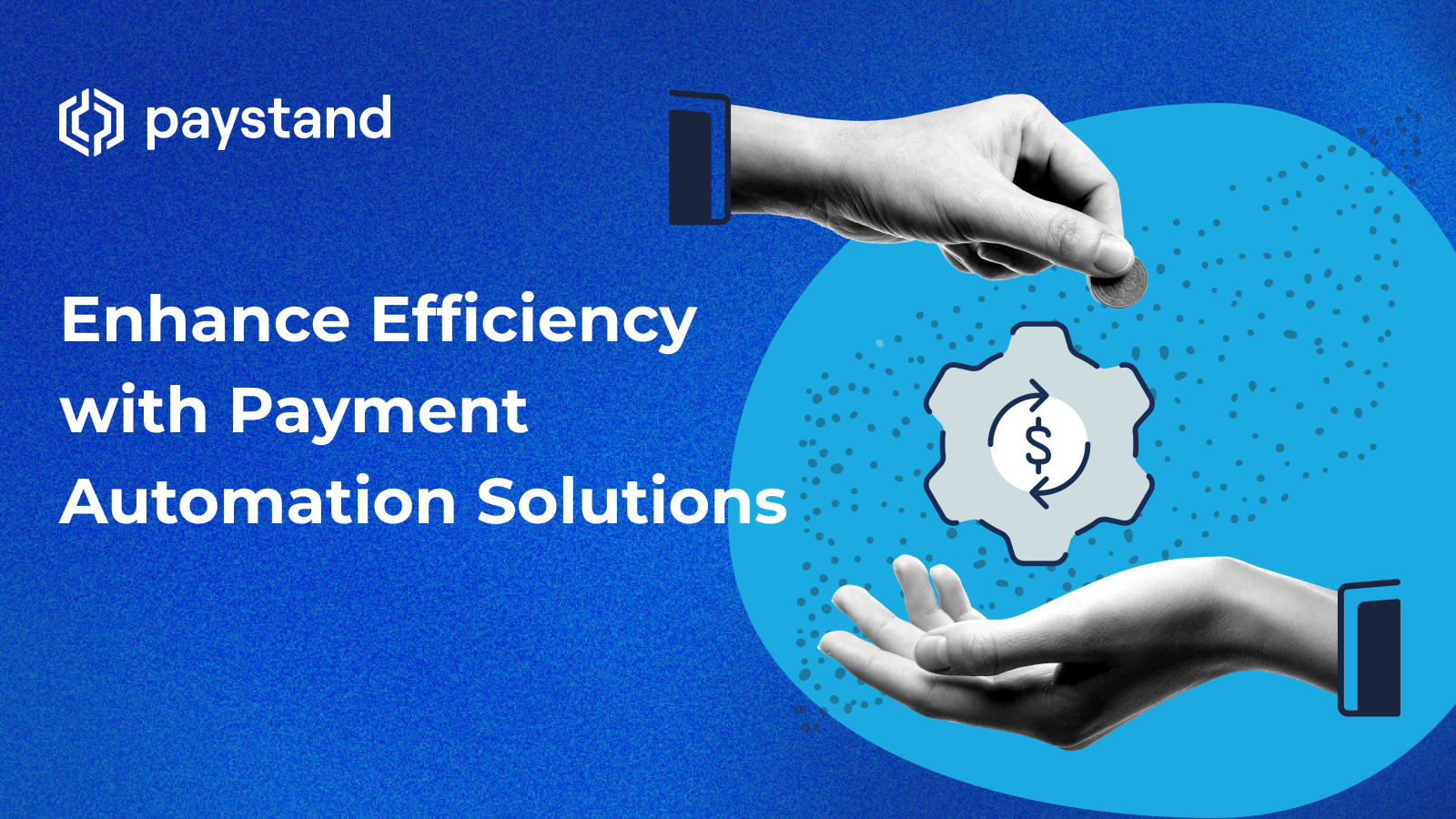Enhance Efficiency with Payment Automation Solutions

Automated payment services offer numerous benefits, including cost reduction, faster invoice processing, and error prevention. Integrating payment automation with ERP systems reduces friction, lowers costs, and boosts efficiency. Platforms like Paystand help transform AR management and improve cash conversion cycles. The COVID-19 pandemic further highlighted the importance of investing in touchless payment processing as businesses adapted to economic challenges and remote work environments.
If your payment system can't process payments quickly enough, the whole organization halts. Automated payment solutions expedite the vendor payment process and provide a stellar customer experience, among many other benefits.
What is Payment Automation?
Payment automation uses technology to streamline and manage payment processes within an organization. This includes automating tasks like invoice processing, approving payments, fund transfers, and record-keeping. By leveraging software solutions, businesses can reduce time spent on manual intervention, minimize errors, and expedite transactions, increasing efficiency and cost savings.
How Does Payment Automation Work?
Payment automation integrates financial software and systems, such as Enterprise Resource Planning (ERP) platforms, with automated payment solutions. These solutions can automatically handle various payment-related tasks:
- Invoice Processing. Automated systems capture, validate, and process invoices without manual input.
- Payment Approvals. Automated workflows route payment requests to the appropriate approvers and track the approval process.
- Fund Transfers. Payments are executed automatically through digital methods like ACH transfers, credit card payments, or digital wallets.
- Record-Keeping. Transaction data is automatically recorded and synced with accounting systems, ensuring up-to-date financial records.
Invoice payment automation cuts invoice processing costs by 50% and speeds up collection time by 62%. Businesses spend $2.7 trillion annually chasing payments and manually processing invoices. The Street reported that each invoice costs $16 to $22. Worse, it can take up to six days to process a single invoice completely. Errors further delay the process and consume additional time-consuming time and energy.
Payment Automation Benefits
Automated payment systems offer numerous benefits to businesses:
- Cost Reduction. Automation cuts invoice processing costs by up to 50% and reduces the need for manual labor.
- Faster Processing. Automation speeds up collection time by 62%, allowing businesses to receive payments more quickly.
- Error Prevention. Automated systems reduce the risk of human errors, ensuring more accurate financial data.
- Enhanced Efficiency. Integrating automation with ERP systems streamlines workflows, reduces friction, and boosts operational efficiency.
- Improved Cash Flow. Faster invoice processing and payment collections improve cash conversion cycles, providing better liquidity management.
Automated payment systems solve challenges faced by AR teams and finance departments. Each year, they become more of a necessity than just a competitive tool.
What Problems Does Payment Automation Solve?
Finance teams still handle many manual tasks, such as transactions, payments, checks, data organization, and transaction matching. This process is lengthy, complex, and error-prone, causing delays and displacing skilled workers.
Manual efforts are costly and inefficient, increasing error risk. Comparing transactions and matching bank records or invoices is error-prone. Inputting data into systems like ERP, POS, and inventory management adds to this risk.
Teams must be on-site to process paper checks and invoices, complicating remote work. Financial tools often don’t integrate well, leading to data issues and replicating manual processes, leaving finance teams overworked and disengaged.
Automated payment solutions reduce or eliminate these problems.
What’s the Difference Between Digitization and Automation?
Although digitization and automation are often used interchangeably, they are different.
- Digitization is the process of converting hard-copy information to digital format. It can be done manually or automatically, but it often requires manual intervention.
- Automation. This improves existing processes using software and specific rules, allowing accounting tasks to be completed without human intervention. Automatic reconciliation is one such example.
Despite having an ERP system, many companies still face limited visibility and manual AP/AR processes. Automating invoice payments through an ERP can save money, speed up collections, and reduce repetitive tasks. Small organizations may use manual payments, but this can limit growth.
How Automated Payments Work With Your ERP
Pairing invoice payment automation with your ERP can reduce friction in various areas:
Streamlined Invoice Management and Payment Processing
Eliminate the risk of lost or mishandled invoices. Human error can lead to late payments when customers don't receive invoices or reminders. An invoice payment automation solution integrates with your ERP data to effectively track and report invoice status. Monitor when invoices are sent, schedule automated reminders, and identify problematic accounts.
Reduce DSO
Lower your DSO and past-due invoice rates. Manually chasing down delinquent accounts is time-consuming and inefficient. Combining ERP and payment solution data simplifies the collection process. Collect and analyze data to focus on high-risk accounts.
Cost-Effective Invoice Processing
Despite ERP systems, many organizations still use paper and fax for invoices. An invoice payment automation solution reduces manual tasks like handling, filing, scanning, and mailing by 70%. Paystand customers have achieved a 98% reduction in processing costs through digitization and automation.
Payment Automation and Accounts Payable
Integrating payment automation with accounts payable (AP) processes transforms how businesses manage their financial operations. Key impacts include:
- Eliminating Manual Tasks: Automation reduces the manual effort required to handle transactions, process checks, and match invoices, making the AP process more efficient.
- Remote Work Compatibility: Automated systems allow AP processes to be managed remotely, essential in the current trend of remote work environments.
- Reducing Errors: By automating data entry and validation, businesses minimize the risk of errors associated with manual processing.
- Improving Supplier Relationships: Automation updates real-time transaction status, reducing inquiries and enhancing supplier communication.
Automated payment systems are becoming increasingly essential for modern businesses. They offer significant improvements in efficiency, accuracy, and cost savings. By integrating these solutions with existing ERP systems, companies can enhance their financial operations and gain a competitive edge.
Transform Your AR with Payment Automation
Paystand is a platform that helps businesses with digital payments, making processing and managing AR easier. We integrate with most ERP software systems and offer flat-monthly pricing to keep your costs low and predictable.
Paystand has improved how businesses manage their finances, including invoicing and AR management. For example, Choozle's automation led to a 50% drop in the cost of receivables over 90 days and a one-third reduction in DSO.
Are you looking for ways to manage, optimize, and automate your cash conversion cycle? We’ve got you covered. Learn more here.







